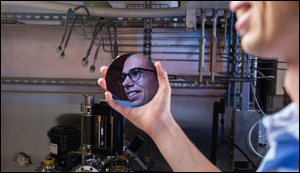ASU research demonstrates silicon-based tandem photovoltaic modules can compete in solar market
31. 7. 2018 | Arizona State University | www.asu.edu
New solar energy research from Arizona State University demonstrates that silicon-based tandem photovoltaic modules, which convert sunlight to electricity with higher efficiency than present modules.
Tandem modules stack two, complementary photovoltaic materials — for instance, a perovskite solar cell atop a silicon solar cell — to best use the full spectrum of colors emitted by the sun and exceed the efficiency of either constituent solar cell on its own. The study was designed to determine how much more expensive high-efficiency tandem photovoltaic modules can be and still compete in the evolving solar marketplace.

Results indicate that in the expected 2020 U.S. residential solar market, 32-percent-efficient anticipated tandem modules can cost more than three times that of projected 22-percent-efficient silicon modules and still produce electricity at the same cost. This premium, however, is a best-case scenario that assumes the energy yield, degradation rate, service life and financing terms of tandem modules are similar to those of silicon modules alone.
Read more at Arizona State University
Image Credit: ASU Holman Lab
-jk-




